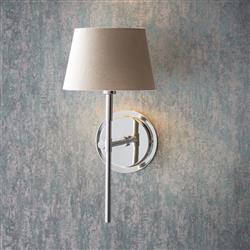Colour Temperature Guide
You’ve probably come across colour temperature when looking for lights before, and you may be wondering – what exactly is it? And how does it relate to lighting?
Understanding colour temperature is important for knowing the right lighting setup for your room.
Our guide will try to explain colour temperature in a simple way and hopefully give you a better understanding of its importance, to help you create the lighting effect you want.
What is colour temperature?
Colour temperature is a way of measuring different shades of light – specifically by giving it a value for how ‘warm’ or ‘cool’ it is.
The scale ranges from bright amber to dark blue. Measured in Kelvins (K), the red/yellow hues are at the low end of the scale and the blue shades are at the high end.
Remember not to confuse colour temperature with brightness. Brightness of light is usually measured in lumens or watts, whereas colour temperature refers to the colour of light.
Kelvin scale / How to measure colour temperature / Measuring colour temperature
The Kelvin scale is used to measure temperatures, similar to Celsius and Fahrenheit, and is always expressed simply as K (with no degrees symbol).
There are no negative numbers on this scale, with the lowest temperature being absolute zero (0K). Because of this, it is typically used by scientists to measure extremely high and low temperatures.
The reason it is used to measure colour temperature is that when objects are hot enough, they emit visible radiation. At about 800 K substances start to emit light, which will be a reddish colour, and as they get hotter the light starts to become brighter and shinier – moving from red to orange, then yellow, white, and finally blue.

International colour code and colour rendering
An important note is that colour temperature can be shown with an international colour code. This is usually a three-digit value which tells you light clarity and colour temperature. The first digit tells you the CRI (Colour Rendering Index) of a light, which measures light clarity, and the last two digits tell you the colour temperature.
Here are a few examples to explain:
| International Colour Code | CRI (Colour Rendering Index) | Colour Temperature |
|---|---|---|
| 127 | 1=10-19 | 2700k |
| 227 | 2=10-19 | 2700k |
| 440 | 4=10-19 | 4000k |
| 535 | 5=10-19 | 3500k |
| 865 | 8=10-19 | 6500k |
CRI tells you the quality of a light source, which is important in terms of colour temperature as the area and objects surrounding a light source should be illuminated in the colour that the light source is supposed to give off. Poorer quality light will have a weaker colour.
Light bulbs
You might be wondering what types of bulbs give off the various colours. It can vary but in general, red light (800-2000K) comes from candlelight, filament lamps give off orange light (2000-2700K), halogen lamps give off yellow (2700-3500) and LED lamps give off white/blue light (3500-5000K).
If you like a warmer, yellowish light then something around 2700K would be good. Or, if you prefer cooler, blueish hues then something between 6500-7500K works well.

Which colour temperature to use
So now that you know more about colour temperature you can feel more confident when choosing the right lights for your home. Remember, when it comes to picking the best colour temperature there is no right or wrong answer.
In general, yellow/warm white colours between 2500-3500K are used in the bedroom or lounge as they have a warm, cosy quality to them.
Cooler colours in the 3500-5000K range are often used in the kitchen or in offices as they compliment the tone of the room with their whiter shades.
For very cool whites found between 5000-6000K, you will usually see them in bathrooms or warehouses as they give a more artificial daylight effect.
Shop from our range of indoor and outdoor lights and find the perfect colour to light up your room, garden or building.

















